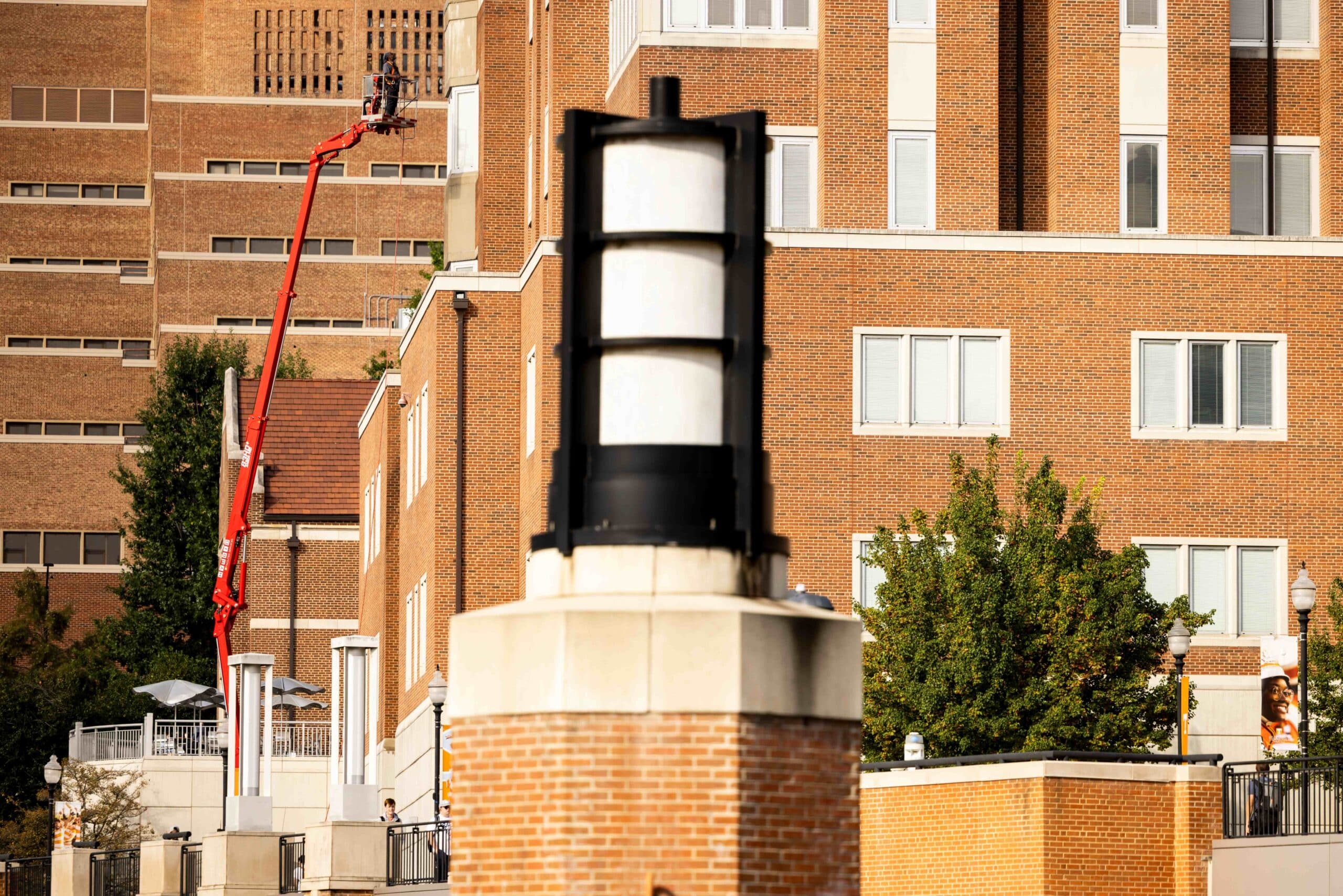October 1, 2025 | Zoe Marcum, FS Comms Student Assistant
UT Facilities Services is continually seeking new ways to keep the campus clean and well-maintained for Vols throughout the year. One of the ways UTFS achieves this is through the newly established power washing team, a two-man operation that started with $100,000 and the idea of keeping the campus clean.
The Power Behind the Wash
The team’s first target was the Art and Architecture building, and the results were immediate. Students and staff alike took notice. “There were people taking videos… [from] all different levels of campus,” says Randall Huelsman, head of the team. The buzz was real. The idea had worked, and the campus was behind it.
The initial rig was a trailer outfitted with a 350-gallon water tank and all the necessary gear — gloves, rain suits, muck boots, power washing wands — everything the team needs in a day. After the success of their first job, Huelsman secured a second rig: A Ford F-450 truck with a flatbed and extended cab. “Now, all we need is a parking space,” he says. The truck is also outfitted with a 350-gallon water tank and all the necessary gear for the team; all they must do is fill up the tank and ensure they have enough detergent and surfactant.
What are detergents and surfactants? Detergents help prevent mold and mildew from returning after cleaning. Surfactants act as emulsifiers, detergents, wetting agents, and foaming agents, breaking down and removing dirt, stabilizing mixtures, and creating foam. The surfactants are also scented, allowing newly cleaned buildings to not only look fresh but smell just as good. How does the team ensure the balance of surfactant, detergent, and water is well maintained throughout the cleaning process? Simple, Randall said that the team always operates with three men. Though officially a two-man crew, each job includes a third team member from UTFS’s Facilities Paint Shop. This person stays on the ground, monitoring water pressure and chemical balance, allowing the washers to focus fully on the task at hand. The washers must be cautious of the distance between their nozzle and the surface they’re cleaning, the lift they might be in, and any other external factors that could distract them.

High Pressure, Higher Precision
Power washing can be incredibly dangerous. Either one of the rigs can push water out at 4,200 psi, providing enough brute force to clean the most difficult surfaces of dirt, grime, mold, and mildew. That kind of power demands precision. UTFS’s older buildings, with their historic facades and older materials, can’t always handle full pressure. The team adjusts, dialing down the intensity to preserve the campus’s integrity while still delivering a thorough clean. Not every building has an easy way to access the 6700 gallons (enough to fill eight fire trucks) of water the team needs for a day, so they found an easy workaround. The UTFS irrigation system. The team has a specialized adapter that can tap into any of the irrigation spouts across campus to access the water they need. The 350-gallon tank each rig has might sound massive, but it can run dry in just over an hour of continuous spraying.
With precision, planning, and a whole lot of water, UTFS’s power washing team has transformed what was once a simple maintenance task into a campus-wide spectacle. “Given the opportunity to do this I think we’ve shown that the campus needed it,” Huelsman says. Their work doesn’t just preserve the university’s buildings but helps keep Rocky Top clean for students, faculty, and Vol fans alike. What started as a $100,000 idea has become a key concept in campus care, proving that even the most daunting challenges can be tackled with the right tools, the right team, and a whole lot of Volunteer spirit.

